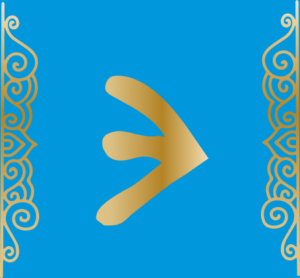




This ancient symbol is the basis of many philosophical and religious teachings and is related to the establishment of the world order. Pythagoras gave the number “three” the meaning of the perfection of being. Aristotle saw in it finality, integrity, and Augustine called it a perfect number. In Mongolian culture, the “three” serves as a model – birth, development and destruction. But basically, the number “Three” reflects the model of the cosmos: the unity of the three worlds – the Upper, the Middle and the Lower, as expressed by the Kazakhs in the concept of the Baiterek – the World Tree. The same concept is reflected in the structure of the yurt, the musical instruments – dombra and kobyz – as well as in the traditional representations of the Kazakhs about the soul: “et-zhan”, “shybyn-zhan” and “rukh-zhan” (classical unity of body, soul and spirit). Also noteworthy is the traditional composition of the Kazakh people from its three zhüz: senior, middle and junior, which are composed of different clans and tribes.
The sacrality of the number “three” is underpinned by many Kazakh rites and rituals: walking around the patient three times while treating the baqsy, touching the deceased three times at the threshold while carrying him, etc. The meaning of the number is expressed by expressions such as: “Er kezegi üshke dein” (i.e. “repeat again”) or “üsh qainasa, sorpasy qosylmaidy” (“absence of any relations between people”). The symbolism of the number “three” is connected with the values of absolute perfection and finality.


